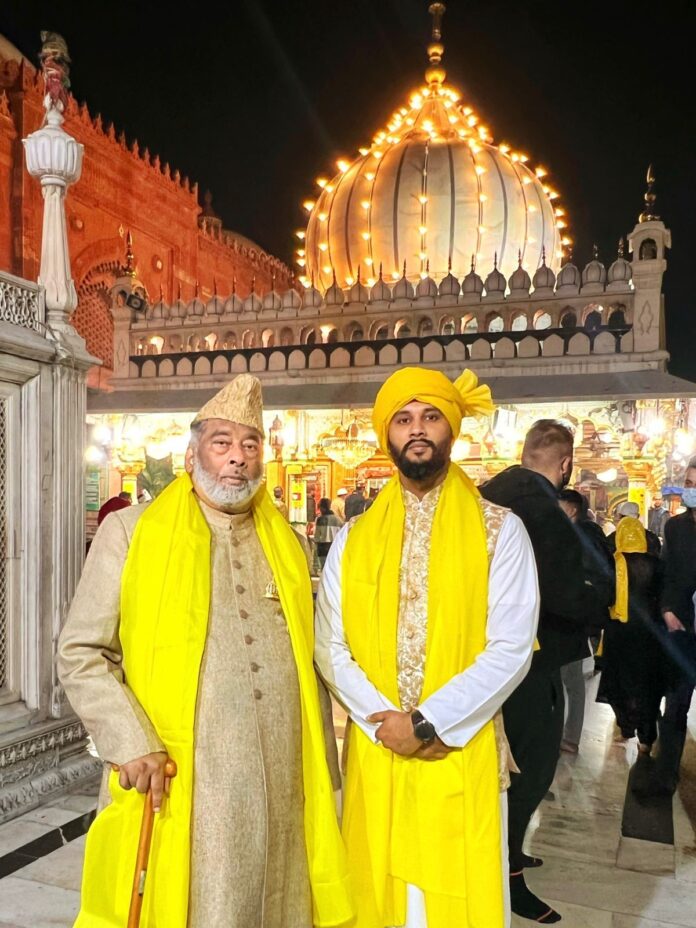Every year Basant Panchami is celebrated at the shrine of the Sufi saint Hazrat Nizamuddin Aulia (R.A) for the last 716 years. This tradition started when Hazrat Nizamuddin Aulia (R.A) lost his most beloved nephew Hazrat Taqiuddin nooh (R.A). After his nephew’s death, Hazrat Nizamuddin Auliya (R.A) had stopped smiling for months and his dearest disciple Hazrat Amir Khusro (R.A) felt heartbroken seeing his master in a state of bereavement.
On the day of Basant Panchami, Hazrat Amir Khusro (R.A) saw a group of women celebrating the festival wearing yellow clothes, singing songs, carrying mustard, tesu, marigold flowers, and walking near Kalka mandir.
Hazrat Amir Khusro (R.A) went back to meet his master dressed in yellow attire carrying mustard and tesu flowers and he sang ” Phool Rahi Sarson Sakal Ban” which means “Mustard flowers are blooming everywhere in the fields”. When Hazrat Nizamuddin Aulia (R.A) saw Hazrat Amir Khusro (R.A) dressed in yellow attire and singing this song the saint smiled and that brought an end to his grieving.
Basant Panchami is the only day of the year when all the Qawaals of the Dargah sharif gather inside the innermost sanctum and sing this song that was written and composed by Hazrat Amir Khusro (R.A).
The celebration of Basant at the Dargah is a living testament to the fact that India has always been secular. In fact on the direction of his master, it was Hazrat Amir Khusro (R.A) who spread and gave rise to the idea of “Ganga – Jamuna Tehzeeb”. Since then that tradition continued and has been celebrated with full fervor which is being attended by people of all faiths in harmony.




